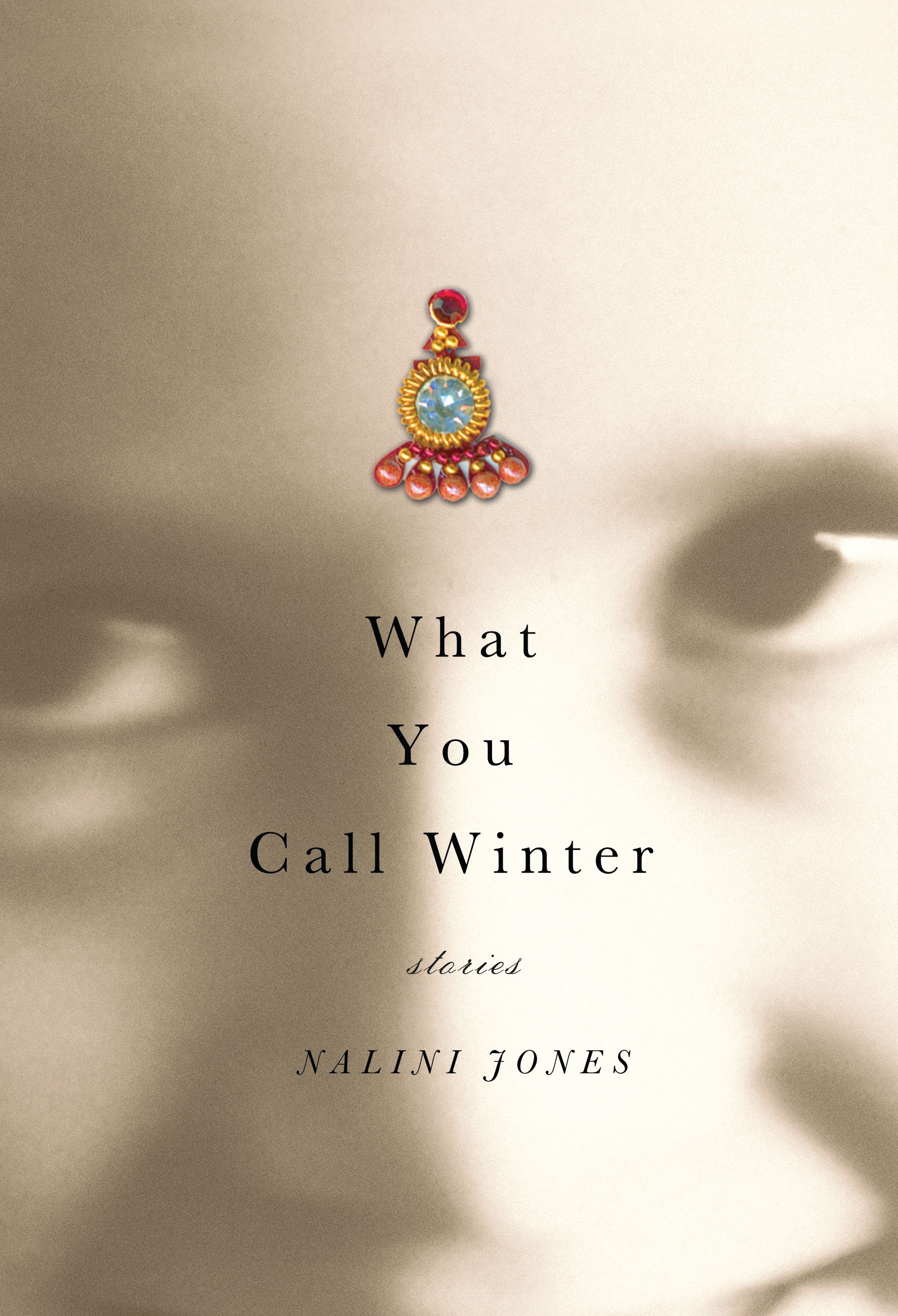Exploring Identity and Writing Stories — Alumni Profile, Nalini Jones ’93
A passionate reader, Nalini Jones ’93 turned to the craft of fiction to explore “essential” questions about family and identity.

Nalini Jones ’93 is a fiction writer, a professor, a former music festival programmer, and a mother. But above all, she is a reader, and my conversation with her was delightfully book-filled. Any reader would, I’m sure, come away from listening to her speak with a long list of books and authors to check out.
In fact, her biggest piece of advice for aspiring writers is to read “in every direction.” Read first for enjoyment, then reread to “think about the choices that the writer was making” — a method she recommends as “the most instructive, exciting way to figure out what choices might work for you.”
Jones’ short story collection, “What You Call Winter” (2007), centers around a family from Santa Clara, a Catholic neighborhood on the outskirts of Mumbai. Its intertwined tales explore what it means to be family across cultures, oceans, and generations. It’s about “what you call winter” in India being different from “what we call winter” in New York, how, though everyone is speaking Christian-school English, language and relationships continually shift with time.
I am not alone in being reminded of Jame Joyce’s “Dubliners” as I read about a small community of characters conflicted over whether to emigrate, whether to give up family houses to real estate developers, and whether it is possible to connect or reconnect with the complexities of home. There’s a copy in the Frost Catacombs, perfect for weekend (or procrastination) reading.
Reading Beyond the Canon
Like many English majors, Jones’ favorite subjects in school were English and history. Her high school curriculum was “super canonical,” focusing on British and American authors, with bits of Russian literature sprinkled in. “It wasn’t that I wasn’t finding great things in that material,” she clarified. Charles Dickens in particular charmed her with his “rollicking long sagas” — perhaps a seed that inspired her own short stories’ masterful leaps in time.
She also read a lot of poetry in high school because, she jokes, “poetry is short.” Her favorite poets were Sterling Brown, Sonia Sanchez, Nikki Giovanni, and, like any good Amherst student, Emily Dickinson, whose work helped shape her interest in diction “in the most fundamental way.”
A turning point came when she was following anti-apartheid movements in South Africa, which led her to the Heinemann African Writers Series, featuring books by Ngũgĩ wa Thiong’o, Chinua Achebe, Ama Ata Aidoo, Alex La Guma, and Bessie Head — texts she would continue to work with at Amherst. Encountering a totally different worldview and aesthetic was “exciting,” even “mind-blowing,” and she added that it expanded her sense of “what literature was and what it could be.”
“To have family in India and be the first generation born in the states, to sort of try to bridge those differences and bridge that distance, to figure out how you could be a family across all that time and space — I hadn’t really understood that as, in a way like anything anyone would be interested in, or would write about,” Jones said.
When she eventually found her way to the works of V.S. Naipaul in college, it was a “real revelation.” As a first-generation Indian American whose family took trips to India as often as they could afford, Jones explained that reading Naipaul’s work made the “personal, natural, authentic experiences I was having within my family feel like something that actually could be written about.”
Becoming a Writer
In Ben Lerner’s novel, “10:04,” the narrator says that asking a writer how they became a writer is essentially asking them to compose an origin myth. If that is the case, Jones is a more honest myth-maker than most. She admits she thought her passion for reading meant that writing would come naturally to her — “and bad writing did come naturally,” she jokes. Back then, she said, she had no idea what to write about nor how to shape a narrative.
Looking back on her Amherst days, the first memory that came to mind was sledding down Memorial Hill on a cafeteria tray (“very, very fun”), followed by memories of professors who were “completely life-changing.” Three professors in particular led her on the path to becoming a serious writer.
Henry Clay Folger Professor of English, Emeritus, William Pritchard taught her modern British poetry and, according to the Summer 2007 issue of the “Amherst Magazine,” was “renowned for his dry wit, his demanding courses and his finely tuned critical ear.” Jones still very clearly admires and respects him, and although she says she barely spoke a word in his class, she has “never forgotten” the experience. “I can remember comments that he wrote on my embarrassingly weak papers,” she says, “because it was such a big deal to hear from someone that knowledgeable and intelligent.”
Another impactful professor was Senior Lecturer in English, Emeritus, Helen von Schmidt, who happens to be Jones’ aunt, and taught what Jones called a “high valued, very beloved composition class.” Enrolling for creative writing courses was just as difficult then as it is now: Jones had to wait until her senior year to be allowed in. It was “the hardest writing I’ve ever done,” she said, adding that it taught her “about prose and structure,” as well as how to write with a “fidelity to character.” In her class, Jones was rigorously trained to look for the right word — “not the word that is close, and not the word that is exaggerating, but the word that really expresses what you want to say, which is another way of figuring out that you might not be sure what you want to say.”
Finally, Caryl Philips, a successful novelist, essayist, and playwright, who was writer-in-residence at Amherst at the time, introduced Jones to authors like Salman Rushdie and Peter Carey, who were “writing back to empire.” Philips’ own work on the African Diaspora and Black Atlantic experience was also “crucial” to her development as a writer: “the boldness and the extraordinary essence of his characters is always a joy, but also instructive.”
Philips would go on to be her senior thesis advisor. Unconventionally, Jones wrote creative nonfiction, a genre she says “wasn’t really a thing then,” about her grandmother in India. She says she wrote memoir because she had not yet figured out basic story structure, and “certainly not novel structure.” Even so, her thesis proved useful and ended up “animating” her stories in “What You Call Winter” — not in actual material, but in themes and ideas.
After graduation, Jones returned to doing what her father had trained her to do: programming jazz music festivals and producing music. She enjoyed the work (she had done it as an extracurricular at Amherst, and is still Backstage Manager at the New Orleans Jazz & Heritage Festival), but it was also a sort of stopgap while she tried to figure out what she’d really like to do.
Being a writer felt like a “dim career prospect,” and she also had some self-doubt, especially when comparing herself to classmates like Cordelia Lawton ’93 and Maria Barcel ’93, whose fiction theses she thought were “spectacular” and “so much further along” than her own writing. Despite all this, she found that she “kept writing anyway.”
Then, crediting her parents for instilling in her an appreciation for education, she pursued an M.F.A. in creative writing at Columbia University. “I went in with a really specific idea that I was going to study craft, but not necessarily ever try to publish anything, because that would be getting ahead of myself,” Jones said.
That turned out to be the right attitude for her and allowed her to discover what she enjoyed about writing, as well as to think through creative problems on her own terms. She is now a professor at the Columbia M.F.A. program, and has also taught writing at Yale University and at the Arcadia Center in Greece.

Writing Indian American Stories
The setting of Jones’ short story collection, “What You Call Winter,” is based on her mother’s family in India, English-speaking Catholics from Mangalore who now live in Mumbai — “much more interested in what is coming out of Rome than, say, what’s coming out of Delhi,” she says laughingly. Her father is white, and she grew up in Connecticut and Ohio, feeling like “a swirl of … different cultures and ideas.”
At Amherst, she did not identify “very strongly” as a South Asian student and “would not have felt quite right showing up” at Indian cultural spaces. She felt she did not have the same cultural references as other South Asians in terms of religion and languages, and she did not know of any language or discourse that expressed what she felt.
It’s not that Amherst wasn’t a politically aware space, she clarified. It wasn’t the case for everyone, but “if you cared — and I cared —” there was a lot of student activism surrounding the Gulf War, Planned Parenthood, and fighting for more class and racial equity on campus, especially for African American students.
Ultimately, writing was what helped Jones come to terms with her identity. “One of the things that writing can offer the person, the writer, is a possibility of coming to terms with a lot of the questions that you have through your life,” Jones said. “And one of the questions that I had was like, well, what does it mean to — in this very, very particular, distant, disjointed way — have a foot in India?” Now, she has “no difficulty at all identifying as someone who is part of an Indian diaspora.”
Of course, she then went back and “read everything I could from India.” Some of her favorite works are “Baumgartner’s Bombay” by Anita Desai (“daring and exciting”) and Rohinton Mistry’s “Family Matters” (one of her favorite novels of all time). She adds that Rushdie’s “Midnight’s Children” “meant a great deal to me,” but she finds herself going back to his other books, “The Moor’s Last Sigh” and “Imaginary Homelands,” even more.
For Jones, writing is about exploring questions that are “puzzling to me, bewildering to me, or intriguing to me, but also somehow essential to me” — questions like, “how does somebody leave home?” or “how do you figure out being a family across a couple of oceans?” It’s not that others haven’t already figured them out, she says, or that her questions are particularly unique. “But it turns out that those are some things I needed to know,” and she’s found that through fiction and character, she has been able to discover answers more fruitfully and imaginatively than otherwise.
Jones believes that other questions, like how to represent an underrepresented culture, or how to translate between spatial and temporal borders, are for readers and critics, not writers. They should be put aside, especially while writing the first few drafts. Instead, she focuses on writing her characters as authentically as possible. By doing this “with real attention, and care, and sensitivity,” she advises, other concerns of representation and translation will naturally “fall into place” in a way that doesn’t feel fabricated or dogmatic.
In her writing career, Jones has also written many essays and articles, especially during the era of the one she calls “Mr. Trump.” She is currently at work on a novel, set to be published with Knopf, hopefully in 2024. Whatever it is about, we can be sure that it will be carefully crafted, and full of honesty and essential questions.





Comments ()